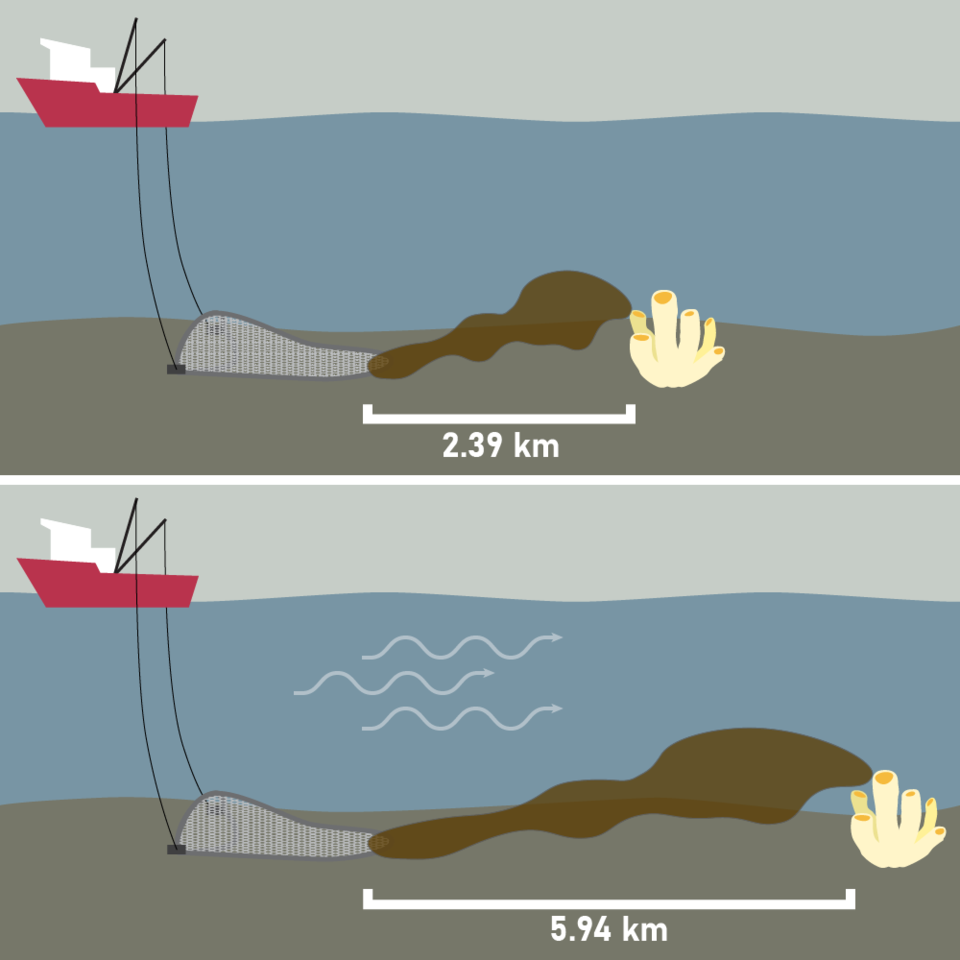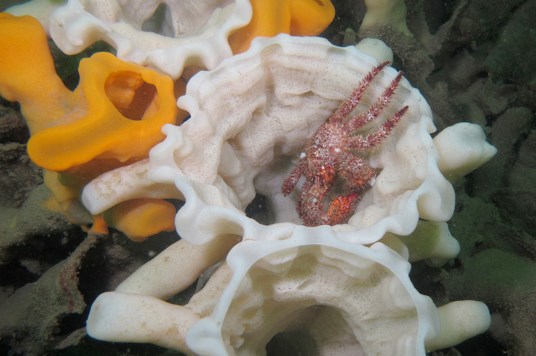The Canadian Parks and Wilderness Society of BC is calling on Squamish residents to advocate for increasing the buffer zones around B.C.’s glass sponges, including those in Howe Sound.
Earlier this year, the federal government created marine refuges to protect the fragile reefs in Howe Sound, but they aren’t nearly large enough, the society says.
The society wants Fisheries and Oceans Canada (DFO) to expand the protective boundary prohibiting bottom-contact fishing, industrial activity, and seabed mining to six kilometres around each glass sponge reef in the Hecate Strait, Queen Charlotte Sound.
Hecate Strait is between Haida Gwaii and the mainland.
There is a one-kilometre buffer zone around each reef in the Hecate Strait and Queen Charlotte reefs.
The society argues the increased buffers (up to six kilometres) would only increase restricted bottom fishing areas in B.C.’s ocean by 0.6%.
Currently, the areas around the glass sponges in Howe Sound are protected by a 150-metre buffer zone.
“That buffer zone is definitely not enough,” Acuna said.
For those in Howe Sound, there's research to show they aren't quite as sensitive to sediment as those up the coast, so the recomendation is for further study to be done to determine the best buffer zone to protect them.
“Trawling is the biggest bottom contact fishing activity,” Carlo Acuna, with the Canadian Parks and Wilderness Society of BC told The Chief.
“You take a net that scours the seafloor and it picks up a whole bunch of fish that are living on the ground... and when it is grinding on that [seafloor], that will release sediment.”
Recently released research, published in April in the Marine Ecology Progress Series journal, shows the sponges are way more sensitive to sediment than originally thought, which lead the society to call for the expanded boundaries.
Scientists sent a remote vehicle below the sea surface at Hecate Strait to do experiments that measured water flow inside the opening on top of the sponges. It could detect how much water the sponges were filtering for feeding.
“They found that when sediment — little dirt particles floating in the water — come into contact with glass sponges, they stop feeding and stop absorbing oxygen” said Acuna.
“Even a little bit of sediment causes them to choke.”
In fact, the study found that sediment from as far away as five kilometres can impact them.
“So, fishing activities such as trawling, that kick up sediment when the nets are grinding on the seafloor, can be really far away — like six kilometres, but can still affect the glass sponges,” Acuna said.
Glass sponges are usually efficient filter feeders, able to filter out 95% of bacteria from the water.
A single small reef can filter enough water to fill an Olympic-sized swimming pool in less than 60 seconds, according to the society, and the nitrogen waste they excrete acts as a fertilizer for plankton, according to Natural Resources Canada.

The NSERC Canadian Healthy Oceans Network and its partners, including the DFO, funded the research.
A representative for the DFO told The Chief the organization is reviewing the Canadian Parks and Wilderness Society of BC recommendations and “is committed to meaningful conservation of Canada’s marine environments, including unique and fragile features like glass sponge reefs.”
“DFO established the Hecate Strait and Queen Charlotte Sound Marine Protected Area (MPA) in 2017, as well as 17 marine refuges in Howe Sound and the Strait of Georgia, to protect glass sponge reefs. The Hecate Strait and Queen Charlotte Sound MPA was established after extensive consultations with Indigenous communities, environmental organizations and industry, and was based on the precautionary approach, peer-reviewed science and input from Canadians,” the emailed statement from Fisheries and Oceans Canada reads.
“The department continues to gather data and information to support the management of the Marine Protected Area and marine refuges and will consider new research on specific risks to the glass sponge reefs.”
Glass sponge fossils date back to 220 million years ago, but they were thought to be extinct until in 1987, when Natural Resources Canada scientists discovered them along the coast of B.C.
Because they weren’t known to be there, fishing activity likely destroyed much of the reefs found in our area.
“We hope that these buffer zones will protect the very rare stuff that we have left,” Acuna said.





